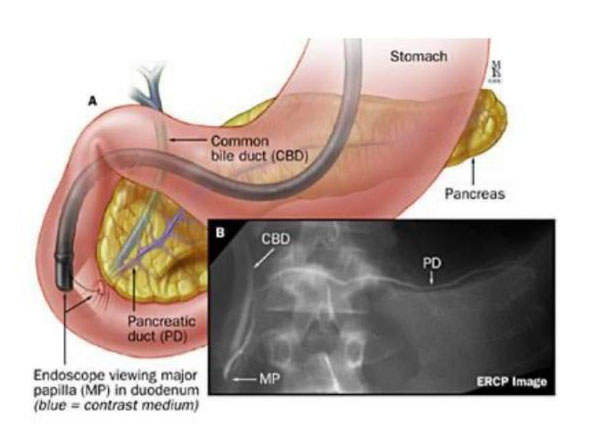Category : Healthcare
Pregnant women develop jaundice due to various reasons. One of the causes being gall bladder stones and common bile duct stones.

We report having treated four pregnant women with jaundice due to bile duct calculi, managed by ERCP and biliary drainage. After delivery patient underwent laparoscopic gall bladder removal.
Multiple studies have shown that at all ages, women are twice as likely as men to form cholesterol gallstones. Hormonal changes that occur during pregnancy put women at even higher risk for gallstone formation. Increased estrogen levels during pregnancy induce the formation of cholesterol-supersaturated bile and sluggish gallbladder motility, two factors enhancing gall stone formation.
The incidence rates of biliary sludge (a precursor to gallstone) and gallstones during pregnancy and postpartum are up to 30 and 12% respectively. The incidence of disease appears to be increased in the last two trimesters of pregnancy.
Approximately one-third of pregnant women with gallstones are asymptotic. When symptoms do occur in pregnant women, the most common clinical presentations are biliary colic, acute cholecystitis, gallstone pancreatitis, and jaundice, Gall stone is the most common cause of acute pancreatitis in pregnancy.
Ultrasound is the imaging technique of choice of pregnant women with gall stones. EUS and MRCP are the available imaging studies in diagnosing a biliary etiology for acute pancreatitis.
The general management of acute pancreatitis in pregnancy is supportive Pregnant women presenting with biliary disease such as biliary pancreatitis, symptomatic CBD atones and cholangitis will require ERCP. The second trimester is thought to be the ideal time for ERCP to avoid any possible teratogenic effects of radiation. According to the American college of gastroenterology guidelines, symptomatic cholecystectomy is ideally performed in the second trimester when the risk of the fetus is the least and only limited technical problems exist as a result of an enlarging uterus.
The outcome of pregnant patients with Acute pancreatitis has substantially improved with technical advances in imaging and therapeutic endoscopy. Fortunately, if treated early, preterm labor can be avoided and the incidence of recurrent attacks minimized.





